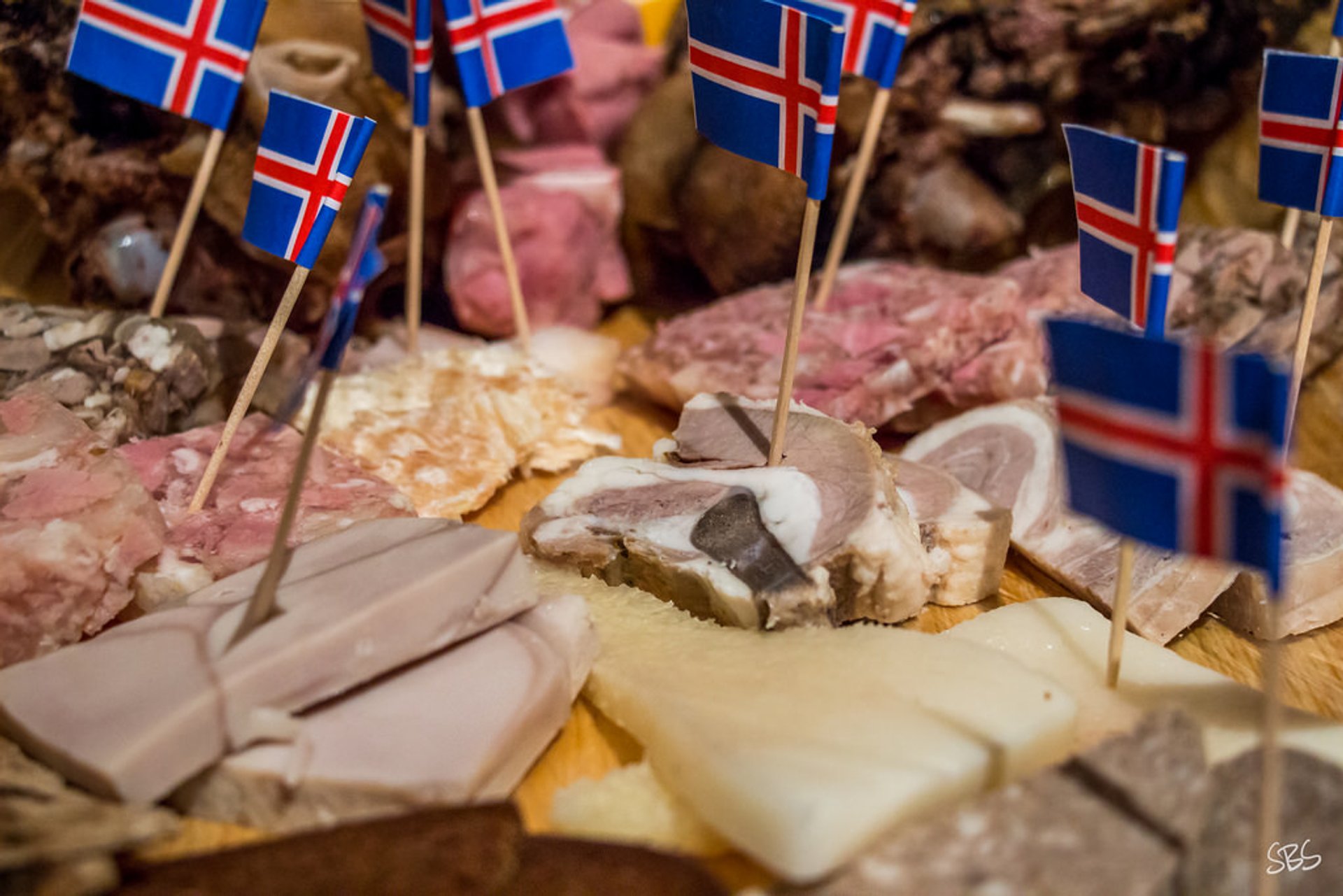Þorramatur
porramatur
Þorramatur is a selection of traditional Icelandic food, consisting mainly of meat and fish products cured in a traditional manner, cut into slices or pieces and served with rúgbrauð (dense and dark rye bread), butter and brennivín (an Icelandic akvavit). Þorramatur is consumed during the Nordic month of Þorri (Thorri), in January and February, particularly at the mid-winter feast of Þorrablót (Thorrablot) as a tribute to old culture. Being thus connected with the tradition of Þorrablót festivals, Þorramatur is most often served as a buffet. Þorramatur is an example of an invented tradition that first emerged with the midwinter festivals of regional associations of migrants who had moved from the Icelandic countryside to Reykjavík during the urbanisation boom of the post-World War II era. These festivals were very popular in the 1950s and 1960s and some of them are still held every year, although their impact on Reykjavík nightlife has greatly diminished. Sometimes at these events there would be served "Icelandic food" or "Icelandic food by ancient custom". This was usually a buffet of country food, often particular to the region in question and quite familiar to the people attending, but which had become rare on the tables of ordinary city-dwelling Icelanders by the middle of the 20th century. The idea of connecting this kind of buffet to the month of Þorri and the Þorrablót festivals, which had been held by many student associations since the late 19th century, came from the restaurant Naustið in Reykjavík. In 1958 the restaurant started advertising Þorramatur, which is the first mention of the word in Icelandic texts. The food was served in large wooden troughs, containing enough food for four people, which were copies of old troughs that could be seen at the National Museum of Iceland. The idea, according to the restaurant owner, was to give people who were not members of a regional association the opportunity to taste traditional country food. It was also an attempt to generate business in an otherwise rather dull season for restaurants. The attempt was successful, as the idea immediately caught on and boosted the popularity of Naustið, even though it was quickly copied by other restaurants. Very soon, many of the regional and student associations which organised annual Þorrablót festivals started serving Þorramatur buffets at their events.
Source: Wikipedia



